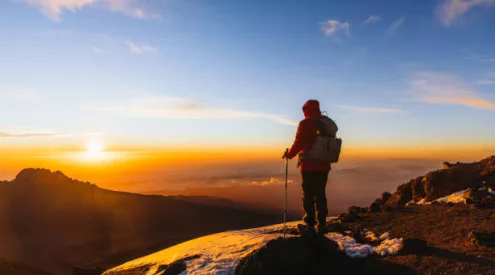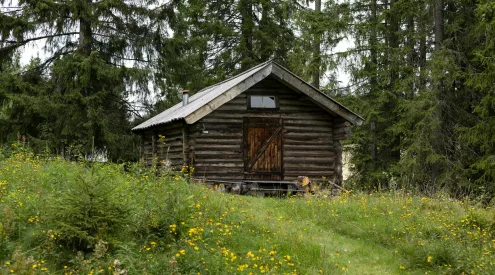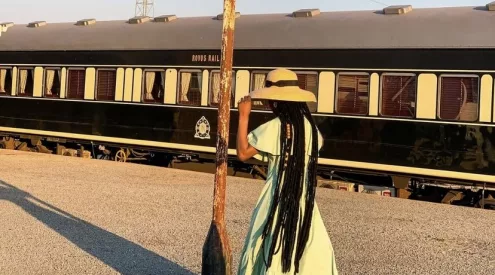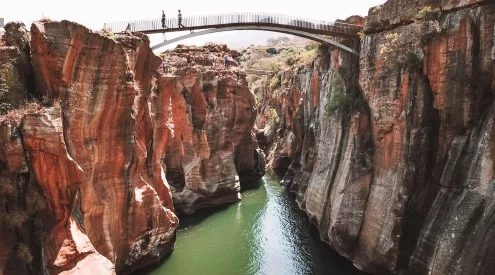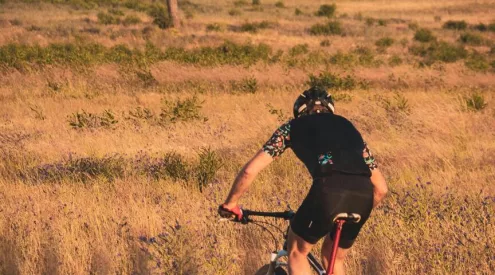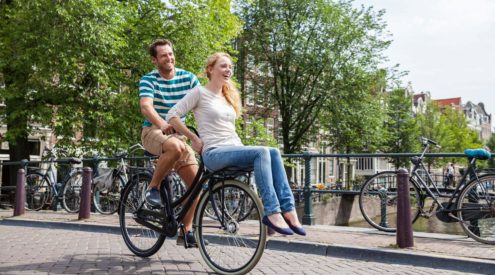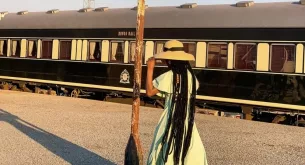The air burnt back & forth from my lungs. Hanging my head, sweat dripped from my nose and vanished into the sand. We had been pushing, pulling, crawling and carrying our bicycles along this heavily sandy bush track in Zimbabwe for two hours already and, at six km/h, we were still eight km from camp when the sun dipped below the horizon. The copious tracks from elephant, buffalo and an obviously large ‘kitty’ reminded us that being alone was our least concern. Then the faint, distant sound of an engine drifted through the mopane; growing louder. Salvation!
Leaving South Africa on February 19, Murray and I have been cycling the back roads of Zimbabwe for over a month now. In the months of planning our trip we had received great advice and help from Graham Ingham of HHK Safaris. Graham kindly offered us a few nights of respite from road-side-tenting at one of their fishing camps in Sijarira Forest Reserve. Many camps in Zim’s remote western parks close for the summer rains and we’d arrived at ‘Sij’ a few weeks before formal opening – hence the washed-out roads hadn’t been attended to yet! Furthermore when I arranged a date for the camp manager to collect us from the main road, I hadn’t accounted for the leap year! So they only expected us the next day! Hence the above scenario as we tried to make our own way down the 20km road to camp.
Kariba is a somewhat forgotten wonder of southern Africa. When Zimbabwe experienced political and economic upheaval between 2000 and 2008 many of its famous destinations fell off the map. Kariba is one of these which, in light of Zim’s improved stability and conversion to the US Dollar as official currency, has many reasons to be placed firmly back on the True Wilderness circuit! The legends of fishing for colossal vundu, eating arguably Africa’s tastiest fish (bream) and fighting the mighty tiger fish are just the start of these. The 400km southern shore of Kariba is a vast wildlife corridor and at its westerly extreme, Sijarira Forest Reserve is arguably Kariba at its wildest. Buffalo, elephant, lion and even wild dog roam the area and the exquisite Narina trogan, African golden oriole and African fish-eagle are just some of the avian delicacies residing around the lake.
After two beautiful and totally isolated days at Sijarira Fishing Camp we felt more than strong enough to continue westward toward Victoria Falls. Mike, the manager, insisted we get a lift with him back to the main Binga-Karoi road. Initially we thought this was because he felt sorry for us battling back through all the sand but he chuckled and said that didn’t worry him at all. It was ‘Agro’ he was concerned about. Agro is the local bull elephant in the area that seems to have a bit of a temper and sense of humour. Mike only moved to Sij as manager six weeks ago and since then Agro has already put a dent in his bakkie. He also seems fond of placing immovably large trees in the road, even if he has to haul them several metres to do so! Mike has developed a respectful love for Agro and, should he squash one of us on our bikes, well then they may need to shoot him and, well, Mike couldn’t bear that.
The ride to Binga was great, turning up hooded vulture and crested guinea-fowl en route. Rolling into Binga, the scores of signs to lodges, fishing camps and chalets told us of a recently by-gone era when Binga served as a Tiger fishing Mecca for anglers. Home to a commercial crocodile farm and a rare fresh-water hot spring, Binga is the supply centre to western Kariba though many of its lodges are battling to regain their pre-2000’s guest numbers.
Kariba offers the visitor that special experience only available in a few places, like Chobe or the Okavango: watching beasts from a boat. Whether it’s ring-side seats at a hippo face-off or the curious sight of four trunks protruding from the water – the only sign of an elephant family crossing to one of the many islands, watching wildlife from a boat makes you part of the action. In fact the true Kariba experience is to float by and view game from the comfort of your own bed! Chartering a house-boat on Kariba is a relaxing and different way to experience wild Africa. The presence of a little tow-along dingy and experienced skipper lets you explore all those secret bays and gorges to reach top fishing spots and sun-downer beaches. House-boats are available for visitors with a range of budgets. From fully-catered five-star motor yachts like The Lady May, with roof-top bar and Jacuzzi deck, to MR Standish; an old railway carriage converted to a self-catering house boat. Named after Miles Standish, American pioneer and character in Henry Longfellow’s esteemed book, this vessel is perfect for several families or groups looking for a different New Year’s plan – a braai and beach party beneath a salmon Kariba sky?
The north-facing view from the beach-side bungalows at Sijarira give one a sense of calm and closure after cycling 1800 incredible kilometres through Zimbabwe. Despite the recent turbulence, Zimbabweans remain some of the friendliest and kindest people on the continent and you are always sure to have a competent, knowledgeable skipper or guide who speaks good English.
From Binga our journey snaked westward, past Milibizi and the sleepy fishing resort of Deka to where the mighty Zambezi resumes her river character and flows with vigour. Our time alongside Kariba reawakened us to the wildness of the continent we were cycling, an exciting and rejuvenating change to the miles of villages and maize fields we’d seen throughout the country’s more populated regions. The forgotten banks of Kariba offer a very cost effective option for South Africans wanting true wilderness but without the top-end market prices of Chobe, the Okavango or Tanzania. She offers a beautiful opportunity for fun and exploration right in our neighbour’s backyard.
Getting to Kariba
Driving – From South Africa, there are various routes to Kariba. If one is visiting the western end of the lake, the best route has generally been to go through Botswana, entering Zimbabwe at Plumtree/Ramokgwebane border post and passing through Bulawayo to find pick-up the Binga road. Recently it seems Beit Bridge border post is becoming less troublesome and offers an alternative entrance to the country. If one is heading for the eastern end of the lake and the town of Kariba, to proceed to Harare and beyond is the usual way.
Flying – Flights are offered to Victoria Falls (western end of lake) or Harare (eastern end of lake) where vehicles can be hired or transfers arranged with tour organisers.
When to go to Kariba
Kariba is a place of multiple personalities and optimal timing depends on your intentions. For seeing game, the best time is to visit in the dry season (June-August) when temperatures are cool, mosquitos scarce and inland seasonal water sources are dry so game is forced to come to the lake. Though this is the dry season for Zimbabwe, the Zambezi is full and the large flow rate and accompanying food means this is a bad period for fishing. Fishing is best done in October-November, when the lake water clears though this may also be when early rains arrive. Birding is best in September-October, when the European migrants are returning. Remember that Kariba is a malaria area and so taking prophylactics is advised!
What to do in Kariba
Kariba has a huge range of activity and accommodation options, from lake side chalets in Matusadona National Parks to luxury accommodation on islands like Spurwing and Fothergill. For house boating you can contact Allan Hein of Nkwazi Charters at [email protected]. For great fishing and stunning accommodation from Sijarira, contact HHK Safaris at [email protected].
About Amanzi Awethu
Alex Antrobus is a young South African currently cycling from Johannesburg to Nairobi as part of project Amanzi Awethu. He and Murray Beaumont are undertaking the journey, unsupported, to raise awareness and support in aid of Africa’s widespread water crises. Share our journey on www.amanziawethu.org
Visit Getaway Accommodation to check some affordable places to stay in Zimbabwe.

